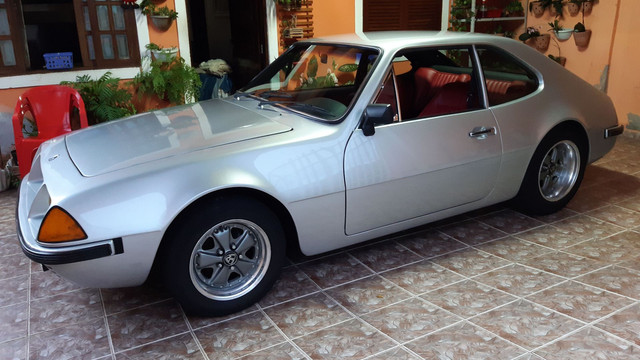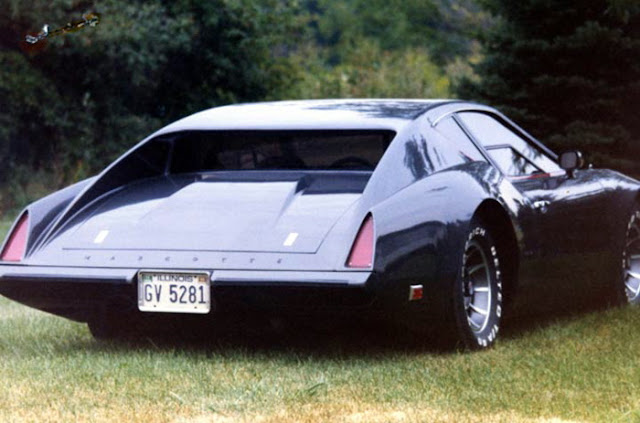The mid 1970's were, in many ways, tough times for the auto industry. The effects of the energy crisis, new regulations, and changing consumer tastes had global consequences. Nations responded in different ways and many makes fell by the wayside. Brazil's response was interesting and, in some ways, unique. In an effort to protect their economy and bolster their local industries, a ban on imported cars and trucks was instituted.
While some international makes like Ford, General Motors, and Volkswagen had local operations in Brazil there were many market segments they did not cater to. This created an opening for newcomers and the Government was keen to encourage and assist such endeavors. Partnerships emerged between industry, educational institutions, and national agencies that created favorable conditions for many new companies during this period. Specialty cars were a major category that had been dominated by imported products and a number of companies emerged to fill this niche.
 |
| The Santa Matilde SM 4.1 |
One such maker was Companhia Industrial Santa Matilde in the city of Três Rios (RJ). Its contribution was the sporty SM 4.1 an elegant fastback 2+2, differentiated from the vast majority of domestic product by its choice of mechanical base. Instead of the almost universal option, the rear engine Volkswagen Brasilia, the SM used mechanical components of the Chevrolet Opala. This included its most powerful engine. The car began development in 1975, designed by Ana Lídia Pimentel, daughter of the President of the company, with engineering of the prototype by racecar driver and constructor Renato Peixoto.
The SM was presented at Expo-77 in São Paulo, and officially launched in 1978 at the XI Motor Show. The car had a galvanized steel chassis-platform with a fiberglass-reinforced plastic body. The Opala's in-line 6 cylinder (171 bhp) was mated to a four-speed manual gearbox, was rear-wheel drive, with an independent front suspension, solid rear axle with helical springs, and disc brakes on all four wheels (Opala in front, and VW Brasilia at rear).
 |
| The Santa Matilde interior |
The interior was intended to be luxurious: it had standard air conditioning, leather upholstery, three-point seat belts, tinted and laminated glass, power windows, built-in antenna, rear defroster, and timed wipers. It should be noted that several of these items were uncommon in Brazilian cars at the time and at least one of them, a complete tool kit, would never be offered by another manufacturer. At the time of its introduction it was the most expensive car on the market, selling for the equivalent of $20,000 USD.
In 1980 The SM received its first restyling, mostly restricted to the rear, which gained softer
lines. Other details included new semi-recessed door handles, revised bumpers, and larger taillights. That year the Chevrolet four-cylinder engine was offered as an option, normally aspirated or turbocharged, which was denoted by a large air intake on the hood (few turbo versions would be sold, with production suspended three years later). In 1981 The car gained hydraulic steering and an optional three-speed automatic transmission. A serious design error was also finally corrected: the structural fastening points of the seat belts were moved from the seats themselves to the body structure.
 |
| The Santa Matilde, with revised roofline and trunk |
By 1983 further changes were made, the most visually obvious being the elimination of the fast-back roofline in favor of a notch-back and enlarged trunk. The creased bodysides were also smoothed over and revised front and rear fascia's rounded out the exterior changes. The interior design was also revised with things such as the spare tire and battery being rearranged. By 1984, a convertible was also introduced.
 |
| The Santa Matilde convertible |
The SM remained in production, albeit in very limited quantity, until 1995. The few copies produced from 1992 were given a new European inspired front fascia which had a more square appearance. As a swan song, one last copy was built to order for a special buyer to their specifications in 1997. This final example had crude body work with skirts integrated into the bodywork and a modified rear, reportedly "inspired" by the German Mercedes-Benz SLK. It also had a three-liter engine, which came from the Chevrolet Omega.
In all, 937 Santa Matilde cars were produced, 76 of which were convertibles. It remains a beloved classic in Brazil with an active community of owners and enthusiasts.
Sources:
Lexicar Brazil
 |
| The Santa Matilde, in revised fastback form (ca.1980) |
 |
| The Santa Matilde fastback, front-right view |
 |
| An original Santa Matilde SM 4.1, front-left view |
 |
| The original Santa Matilde SM 4.1, in profile |
 |
| The original Santa Matilde SM 4.1 had slightly recessed rear glass |
 |
| The Santa Matilde SM 4.1, in original fast-back guise |
 |
The Santa Matilde coupe in profile. After 1983
a revised roofline and trunk were added |
 |
| The Santa Matilde, looking almost Teutonic in black |
 |
| The Santa Matilde, left rear |
 |
| The Santa Matilde coupe, shown in pristine stock form |
 |
| The Santa Matilde with tasteful contemporary wheels |
 |
| The Santa Matilde in profile |
 |
| The Santa Matilde, left-rear view |
 |
| The Santa Matilde coupe in profile |
 |
| The Santa Matilde coupe head on |
 |
| The Santa Matilde coupe, front-left view |
 |
| The Santa Matilde coupe and convertible |
 |
| The Santa Matilde in mid 80's form with custom wheels |
 |
The Santa Matilde convertible was added to
the range in 1984 (image from the SM Club) |
 |
| The Santa Matilde convertible in pearl |
 |
| The Santa Matilde convertible, in red |
 |
| The Santa Matilde convertible interior |
 |
| The Santa Matilde sourced its engine from the Chevy Opala |
 |
The final Santa Matilde, built in 1997, was
a 'one-off' with a Mercedes inspired rear |
 |
| The final Santa Matilde also had a revised nose (1997) |


































Comments
Post a Comment